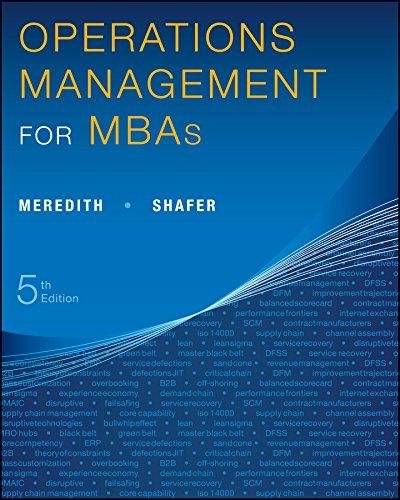Question
Trinity Inc. is a software company sells a product enabling inbound, or permission-based, marketing for small businesses. The company was founded on the premise that
Trinity Inc. is a software company sells a product enabling inbound, or permission-based, marketing for small businesses. The company was founded on the premise that emerging technologies such as social networks, blogs, Twitter, and etc. offer marketers new and more efficient ways to attract customer. The company targets 2 segments A & B. Segment A are small business and Segment B are medium sized businesses. Mary, the marketing manager is keen to know how to use CLV to make informed marketing decisions. Here are some facts: The sales costs for Segment A is less than $1,000; Segment B cost around $5,000. Segment A generates $5000 of profit from1st and 2nd year and 0 on the third year ; Segment B generates &16, 666 from 1st to 3rd year. Each marketing dollar spent to acquire Segment A generates $5 in profit; each dollar spent to acquire Segment B generates $2 in profit. This implies a marketing cost of 17%, or $1,667, for the Segment A ($1 marketing expense/($1 marketing expense + $5 profit); 33%, or $16,667, for Segment B ($1 marketing expense/($1 marketing expense + $2 profit). Segment A has 1.3 million potential customers and Segment B has 500,000 potential customers. Please note the following assumptions: The average per-customer profit is already included, different customer retention scenarios are no longer needed (they are effectively included in the average); however in an actual analysis, this would be a factor. Average customer tenure is very short, discounting in this case will not materially affect CLV unless very large discount rates are applied. However, in an actual analysis, with longer customer tenure, applying a discount rate could significantly affect CLV. Requirement: (You may present the final answer in a table if you want) 1. Compute for the following a. total acquisition cost (for each segment) b. customer lifetime value (for each segment) c. return on Sales and Marketing Investment for each segment) 2. On the Breakeven Analysis a. Monthly Profit (for each segment) b. Breakeven Rate in months (for each segment)
Step by Step Solution
There are 3 Steps involved in it
Step: 1

Get Instant Access to Expert-Tailored Solutions
See step-by-step solutions with expert insights and AI powered tools for academic success
Step: 2

Step: 3

Ace Your Homework with AI
Get the answers you need in no time with our AI-driven, step-by-step assistance
Get Started


